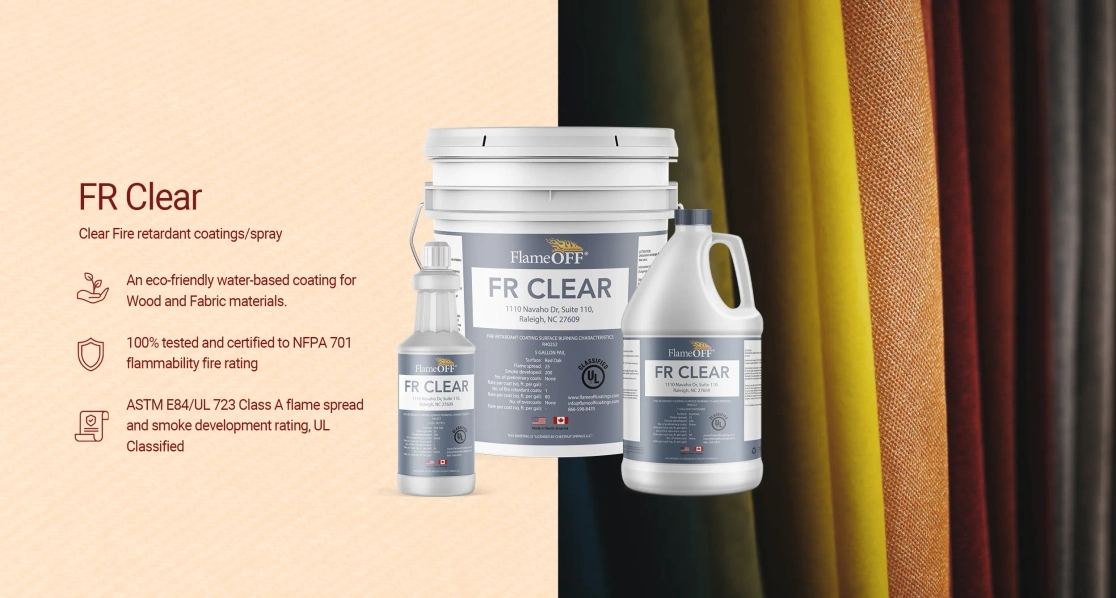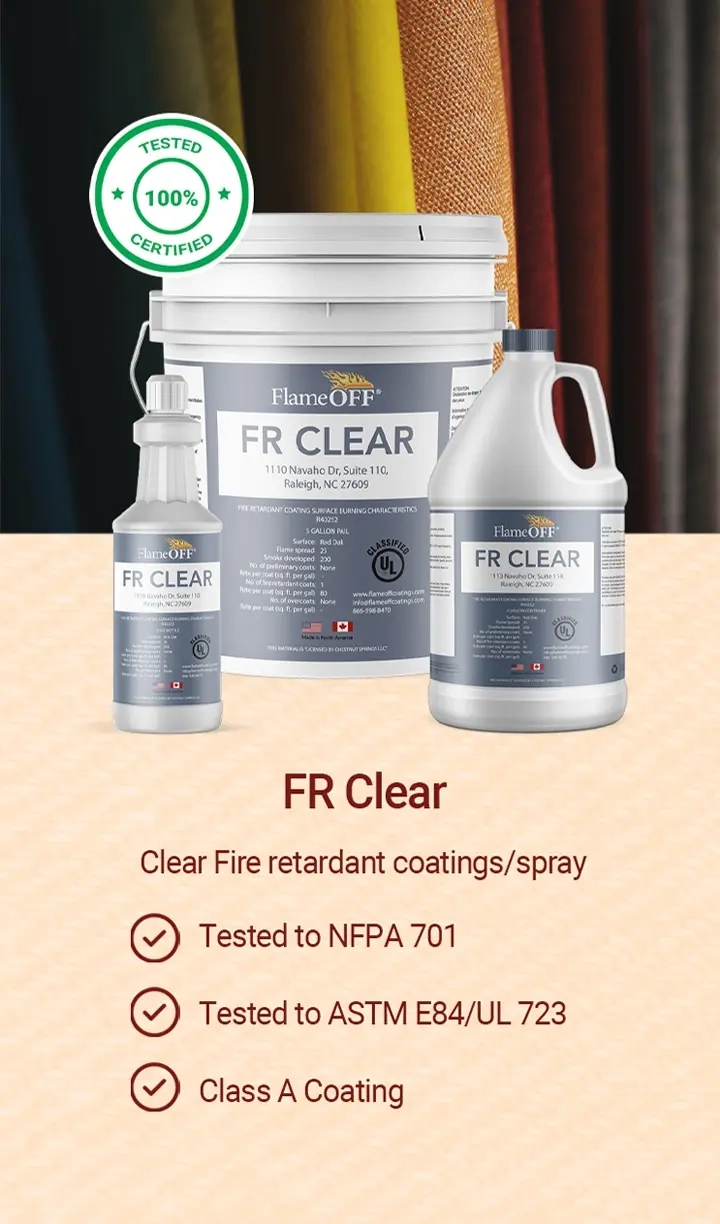Applying Flame-Retardant Coatings on Fabrics, Leather, and other Porous Materials
Fabrics used in public spaces must meet certain fire safety standards according to the NFPA 701 test under the criteria mandated by the National Fire Protection Association (NFPA) and TB 117-2013/ASTM E1353 under California law. These tests are responsible for testing the flammability of a fabric and ignition resistance as it is exposed to a flame or lit embers.
A properly rated fire-retardant fabric that has passed the NFPA 701 test should have an after flame that is less than 2 seconds, a char length that is less than 6.5 inches, and lastly, the flame should stop when it reaches the floor of a test chamber. A fire-retardant fabric that has passed TB 117-2013/ASTM E1353 will show no signs of smoldering after exposure to a lit cigarette for 45 minutes, no open flaming, and a char length that is less than 1.8 inches. It is important to use flame-retardant fabrics in public spaces as in most states and cities proper fire protection is mandated by law.
Other Fabric tests include UFAC 1990 Fabric Classification and CCR Title 19, Sec. 1237.1 Flame Resistance. Passing UFAC 1990 indicates that when tested the substrates did not ignite or display a vertical char that was equal or greater to 44 mm. CTB 117-2013 is the standard for testing upholstered furniture, tested specimens must resist smolder ignition in order to pass.
One of the many approaches to fire safety involves limiting the spread of a fire to its source. In doing so the integrity of a building’s structure can be preserved. Another hazard of fires comes from the smoke that is produced that is toxic for humans and other living things. Quality protective coatings will help to contain the spread of fire, as well as reduce smoke emissions.
Fire protective fabrics may be used on:
- Vertical blinds
- Carpets and rugs
- Leather upholstery or wall coverings
- Wallpaper
- Partitions
- Paper/Cardboard
- Table linens
- Various textiles
- Automotive or airline interiors
- Other Fabric Items
- Professional clothing
- Upholstery and cushions
- Drapery
- Tarps
- Tents
- Curtains




This equipment is found to be particularly useful in industries such as healthcare, emergency work, construction, and the military. Moreover, it is important that fabrics used in public locations such as schools, hospitality, entertainment, aerospace, hospitals, or other such locations are properly fire rated. Such products may also be applied for residential projects. Such products serve as reliable protection for diverse interiors and materials. This is not limited to buildings and extends to the interior of aircraft and automobiles.
In general fabrics in such projects should not be overlooked when taking on the task of proper fire protection. Many different fabrics may be incorporated in a project including those made from synthetic fibers (such as polyester and nylon), natural fibers (such as cotton, linen, and silk), and leather. Furthermore, while some fabrics may be more combustible than others, they will all eventually catch fire, facilitating fire spread and destruction of property.
Protect fabrics in your buildings with FR Clear in order to help limit fire spread, as well as smoke production. After 45 minutes of exposure to a small ember (such as a lit cigarette), our product demonstrated no signs of smoldering, no open flaming, and a vertical char length of 1.8 in or less, passing the criteria of TB 117-2013/ASTM E1353.
Similarly, our product passed the criteria of the NFPA 701 test, with an after flame that was less than 2 seconds, a char length that was less than 6.5 inches.
Our product provides high heat transfer protection, this means that it will protect substrates under intense heat, and stop them from igniting. In short, materials coated with fire retardant are not flammable, saving them from the spread of fire as it travels from unprotected items. When applied to clothes the right coating can significantly reduce heat transfer, protecting the wearer from intense heat.
Flame-Retardant coating for fabrics are non-toxic, odorless, non-corrosive, and water-soluble, making them safe for people and safe for the environment.


Try the FlameOFF Coatings steel calculator to get an idea of the approximate amount of product needed for your projects. It is the guide you need to minimize the guesswork in your projects.
Steel Coverage Calculator